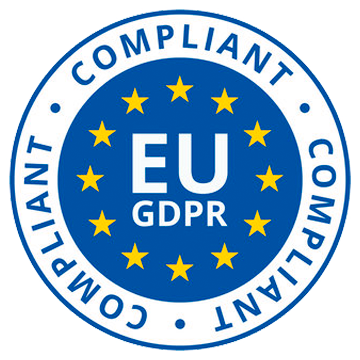Understanding the Importance of secure document sharing
Before delving into the intricacies of secure document sharing, it is crucial to understand why it matters in the first place. In today’s interconnected world, data has become one of the most valuable assets. Whether it’s personal documents, confidential business files, or sensitive financial information, the consequences of a data breach can be devastating. From financial loss and reputational damage to legal ramifications, the impact of unauthorized access to your files can be far-reaching.
Risks associated with unsecured document sharing
The risks associated with unsecured document sharing are not to be taken lightly. Hackers and cybercriminals are constantly on the prowl, seeking vulnerabilities to exploit. Unsecured document sharing methods, such as email attachments or public cloud services, can leave your files susceptible to interception, unauthorized access, or even complete loss. Moreover, unintentional mishandling of files or human error can also pose significant risks to the security of your data.
Share smarter links
With Sizle, every link is trackable. See who opens it, how long they stay and capture leads instantly.
Trusted by 30,000+ users. No credit card needed.
Imagine a scenario where you send an important document to a colleague via email attachment, only to realize later that you accidentally sent it to the wrong recipient. This simple mistake could lead to a breach of sensitive information and potentially expose your company to legal liabilities. Secure file sharing solutions help mitigate these risks by providing encryption, access controls, and audit trails to ensure that only authorized individuals can access and collaborate on files.
The role of secure document sharing in business
In the business world, secure document sharing is not just a matter of protecting sensitive data; it is also crucial for smooth collaboration, improved efficiency, and regulatory compliance. With teams spread across different locations and working remotely becoming the norm, secure document sharing ensures that employees can access and collaborate on files securely, regardless of their physical location.
Consider a multinational corporation with offices in various countries. Without secure document sharing, employees would face challenges in sharing and accessing files across different time zones and geographical boundaries. Secure document sharing platforms provide a centralized and secure repository for files, enabling seamless collaboration and eliminating the need for cumbersome file transfer methods.
Moreover, adherence to data protection regulations, such as the General Data Protection Regulation (GDPR), is much easier to achieve when secure document sharing practices are in place. Organizations that fail to comply with these regulations can face hefty fines and damage to their reputation. By implementing secure document sharing solutions, businesses can demonstrate their commitment to data privacy and protect themselves from legal consequences.
Basics of secure document sharing
Now that we understand the importance of secure file sharing, let’s dive into the basics of how it works.
What is secure document sharing?
Secure document sharing refers to the process of exchanging files in a safe and protected manner, preventing unauthorized access or interception. It involves the use of secure file sharing systems or platforms that employ encryption, access controls, and other security measures to safeguard files and the information they contain.
Key features of secure document sharing systems
Secure file sharing systems offer a range of features to ensure the confidentiality, integrity, and availability of your files. These features may include:
- End-to-end encryption: Encrypting files during transmission and storage to protect against eavesdropping or data interception.
- Access controls: Granting or restricting access to files based on user roles, permissions, or specific criteria, such as time or location.
- Audit trails: Maintaining a detailed record of file activities, including who accessed, modified, or shared a file, for accountability and traceability.
- Version control: Allowing users to track and manage different versions of a file, ensuring seamless collaboration and preventing the loss of important changes.
End-to-end encryption is a fundamental feature of secure document sharing systems. It ensures that files are encrypted from the moment they are uploaded to the system until they are accessed by the intended recipient. This means that even if someone intercepts the file during transmission or gains unauthorized access to the storage system, they will not be able to decipher its contents without the encryption key.
Access controls play a crucial role in secure document sharing by allowing organizations to define who can access certain files and what actions they can perform. User roles and permissions can be set up to ensure that only authorized individuals have access to sensitive files. Additionally, access controls can be based on specific criteria, such as time or location, further enhancing the security of document sharing.
Audit trails provide a detailed record of file activities, allowing organizations to monitor and track who accessed, modified, or shared a file. This information is essential for accountability and traceability, as it helps identify any unauthorized or suspicious activities. By maintaining an audit trail, organizations can quickly detect and respond to potential security breaches.
Version control is another important feature of secure document sharing systems, especially in collaborative environments. It allows users to track and manage different versions of a file, ensuring that changes are properly documented and preventing the loss of important modifications. Version control eliminates the confusion that can arise when multiple users are working on the same file simultaneously, ensuring that everyone has access to the most up-to-date version.
Secure document sharing systems offer a range of features to protect the confidentiality, integrity, and availability of files. End-to-end encryption, access controls, audit trails, and version control are just a few examples of the security measures employed by these systems. By implementing secure document sharing practices, organizations can safeguard their sensitive information and ensure that files are exchanged in a safe and protected manner.
Steps to ensure secure document sharing
Now that we have covered the basics, let’s explore the steps you can take to ensure secure file sharing in your organization.
Choosing the right document sharing platform
The first step towards secure file sharing is selecting a reliable and secure file sharing platform. When evaluating different platforms, consider factors such as encryption protocols, access control options, user-friendliness, and integration with existing systems. It is also important to assess the platform’s track record in terms of security and compliance with industry standards.
Implementing User Access Controls
User access controls are essential in ensuring that only authorized individuals can access or modify files. Implementing role-based access controls, strong passwords, and multi-factor authentication can significantly reduce the risk of unauthorized access.
Regularly updating and patching your systems
Keeping your systems up to date with the latest security patches and updates is crucial for safeguarding against emerging threats and vulnerabilities. Regularly updating your document sharing platform and associated software will help ensure that you are protected from known security vulnerabilities.
Establishing a secure file transferprotocol
In addition to choosing a secure document sharing platform, it is important to establish a secure file transfer protocol. This involves using encryption technologies such as Secure Sockets Layer (SSL) or Transport Layer Security (TLS) to protect the confidentiality and integrity of the files being transferred. By implementing a secure file transfer protocol, you can ensure that sensitive information remains protected during transit.
Conducting regular security audits
To maintain a high level of security in your document sharing processes, it is essential to conduct regular security audits. These audits involve reviewing your document sharing platform, access controls, and security measures to identify any potential vulnerabilities or weaknesses. By conducting regular security audits, you can proactively address any security issues and make necessary improvements to enhance the overall security of your document sharing system.
Providing employee yraining and awareness
Another important step in ensuring secure document sharing is providing comprehensive training and awareness programs for your employees. Educating your employees about the importance of secure document sharing practices, such as avoiding suspicious email attachments and using strong passwords, can help prevent accidental data breaches. By fostering a culture of security awareness, you can empower your employees to make informed decisions and actively contribute to the overall security of your organization.
Implementing data loss prevention measures
Data loss prevention measures are crucial in protecting sensitive information from unauthorized disclosure or loss. By implementing data loss prevention technologies, you can monitor and control the flow of data within your organization, preventing accidental or intentional data leaks. These measures can include data encryption, data classification, and data leakage detection and prevention mechanisms.
Regularly reviewing and updating security policies
Security policies play a vital role in ensuring secure document sharing practices. It is important to regularly review and update your security policies to reflect the evolving threat landscape and technological advancements. By keeping your security policies up to date, you can ensure that your organization is equipped with the necessary guidelines and procedures to maintain a secure document sharing environment.
Best practices for secure document sharing
While secure file sharing systems provide robust security features, it is equally important to adopt best practices to maximize the protection of your files.
Educating employees about secure file sharing
Employee education and awareness play a vital role in maintaining the security of your files. Conduct regular training sessions to educate employees about the risks associated with unsecured document sharing and teach them best practices for secure document sharinging.
During these training sessions, emphasize the importance of creating strong and unique passwords for document sharing accounts. Encourage employees to use a combination of letters, numbers, and special characters to make their passwords more secure. Additionally, educate them about the dangers of sharing passwords and the importance of keeping their login credentials confidential.
Furthermore, discuss the risks of phishing attacks and how to identify suspicious emails or links. Train employees to be cautious when opening attachments or clicking on links, especially if they come from unknown or unverified sources. By teaching them to recognize phishing attempts, you can reduce the chances of unauthorized access to your files.
Using encryption for file sharing
Encryption is an essential component of secure file sharing. Implementing strong encryption algorithms and using secure file transfer protocols, such as Secure File Transfer Protocol (SFTP) or Virtual Private Network (VPN), ensures that files are protected during transmission and storage.
When selecting an encryption algorithm, opt for industry-standard ones like Advanced Encryption Standard (AES) with a key length of 256 bits. This level of encryption provides a high level of security and is widely recognized as a reliable choice for protecting sensitive data.
In addition to encryption, consider implementing two-factor authentication (2FA) for document sharing accounts. This adds an extra layer of security by requiring users to provide a second form of verification, such as a unique code sent to their mobile device, in addition to their password.
Regular audits and monitoring
Regularly auditing and monitoring document sharing activities are crucial for identifying potential security breaches and taking proactive measures to prevent them. By analyzing file access patterns, monitoring user activities, and implementing real-time threat detection mechanisms, you can stay ahead of potential threats and mitigate risks.
During audits, review user permissions and access levels to ensure that only authorized individuals have the necessary privileges to view or modify files. Remove any unnecessary access permissions and regularly update user roles to reflect changes in responsibilities or job roles.
Furthermore, consider implementing data loss prevention (DLP) solutions that can detect and prevent the unauthorized transfer of sensitive information. These solutions use advanced algorithms to analyze file content and detect patterns that indicate potential data breaches.
By regularly monitoring document sharing activities, you can also identify any unusual or suspicious behavior that may indicate a security breach. Implementing real-time alerts and notifications can help you respond quickly to potential threats and minimize the impact on your files.
In conclusion, while secure document sharing systems provide a solid foundation for protecting your files, adopting best practices is essential to enhance their security. By educating employees, using encryption, and regularly auditing and monitoring document sharing activities, you can significantly reduce the risk of unauthorized access and data breaches.
Overcoming common challenges in secure document sharing
Despite the availability of secure document sharing solutions, organizations often face challenges in implementing and maintaining secure document sharing practices.
Dealing with large file sizes
Sharing large files securely can be challenging, especially when traditional document sharing methods impose restrictions on file size. Opt for document sharing platforms that offer large file handling capabilities, compression techniques, or integrate with cloud storage services to overcome this challenge.
Ensuring compatibilityacross different systems
Collaborating with different stakeholders who may be using different operating systems or applications can create compatibility issues. Look for document sharing platforms that support a wide range of file formats and offer seamless compatibility across various devices and software.
Maintaining user-friendliness while ensuring security
Balancing user-friendliness and security can be a delicate task. Aim to find a document sharing platform with an intuitive user interface, easy file uploading and downloading processes, and clear instructions to minimize user confusion and ensure smooth adoption.
In conclusion, secure document sharing is a critical aspect of maintaining the confidentiality, integrity, and availability of your files. By understanding the risks associated with unsecured document sharing, implementing robust security measures, and adhering to best practices, you can ensure the safety of your files and protect sensitive information from unauthorized access. Remember, secure document sharing is not just a matter of compliance; it is an essential component of effective collaboration and information exchange in today’s digital landscape. Stay secure, stay informed, and continue to leverage the benefits of secure document sharing in your personal and professional endeavors.
You already sent the file. See what happens next.
Every unread document costs you time and opportunity.
Sizle shows what really happens after you hit send, instantly and securely.
Free 7-day trial. No card required.
Unlock insights instantly.



